Sunday August 25, 2013
Looks like the security guards at the airport thought that six hours straight was enough to let us sleep on the floor in front of Radio Shack before nudging us awake at 5:30 this morning and telling us to move on. Â Or at least, that’s the body language Matt picked up on since the guard was talking to him in Spanish and I was still passed out. Â Honestly, I’m kind of surprised they let us stay there that long considering it was still a relatively busy area in the airport and people were constantly walking by. Â Guess they’re still a little lenient with airport sleepers here in Peru, because I don’t think I could see security being ok with people sleeping right next to the food court back in the States.
Still having no idea how far away our hostel was located or the best/cheapest way to get there, we moved over to a table at Starbucks where I got a plain black coffee just to be able to access the internet and answer our questions.  The security guard was still giving us sideways  glances, probably expecting us to wait and see if he left so we could steal our sleeping spot back.  Tempting, but it now looked like we were up for the day.
Quick side note on our spending while we’re here in South America. Â As not to completely break our bank and keep our monthly budget not a whole lot higher than the $1,500 – $2,000 a month we allow ourselves right now, we’ve tried to set in place some strict spending rules while we’re away. Â We know there will be bus tickets and entry fees to get into places we want to see, but we’re going to try to live in the guidelines of $10/person or less for lodging each night, and $10/person or less for food each day. Â Having researched many many hostels before we left, the lodging shouldn’t be much of a problem if we stick to dorm rooms. Â The food? Â Well, I don’t see any fancy restaurants in our future. Â But this is also another reason why we began scouring the internet for cheap ways to get to our hostel downtown. Â A taxi would obviously be the most expensive. Â There were collectivos, similar to what took to Morales the other month, but we didn’t know if they came to the airport, and more importantly, did not know how to direct them to our hostel. Â There’s also an underground metro system, but apparently you have to buy a card, and we just didn’t want to mess with that. Â So, taxi it was.
We found a driver right outside the door, an English speaking one, and although we were able to talk him down about six dollars, I’m still guessing we got the much higher tourist rate for the ten minutes it took us to get downtown. Â Walking up to the hostel’s door, it was locked with no sign of life inside, so we meandered through the park across the street, giving it a good hour before we went back to try again. Â When the door was still locked on our second trip back, we started getting frustrated, until a person passing by on the street pointed to the buzzer we hadn’t noticed right next to the door. Â Ahhh, yes. Â We Americans are so very observant.
 Italian Art Museum that was across from our hostel.
Getting checked into the hostel and finding out our room wouldn’t be available for another seven hours, we left our bags in a lounge area behind the desk (after having done a quick clothing change there as well) and hit the streets of Lima to see what we could explore. Â My new messenger back was stocked full with our Peru guide, a Spanish to English Dictionary, my camera, and even a long sleeve shirt for me to throw on in case it got cold, but with the sun coming out and warming up the streets I had no reason to think I would need it. Â Opening up the guidebook once we were outside, it said the Plaza de Armas was a spot well worth visiting. Â Trying to follow the street maps given we were quickly lost and needed to ask directions. Â As it turns out, the street cop that I tried my terrible Spanish on ended up speaking perfect English. Â He directed us toward the Plaza and also told us not to miss out on the Basilica de San Francisco and the tour of the catacombs housed below.
The streets were full of homes with these enclosed balconies. Â I want one!
When we did find ourselves dropped out into the Plaza de Armas, we were astounded. Â It was huge, stunning, and not at all what we were expecting. Â Besides the large courtyard with a fountain in the center, two sides of the square were surrounded by bright yellow buildings full of restaurants and shops, and the other two sides housed the Lima Cathedral, and the Presidential Palace. Â Each were striking in their stature, and it didn’t even take us two seconds to run into the Cathedral to check it out. Â The size itself was impressive as it stands with two large towers marking the entrance and vaulted ceilings with rows of pillars on the inside. Â Lining both sides of the church and making their way up to the altar are gated off alcoves that contain sculptures and carvings that are so intricate that I could imagine someone spending their whole lifetime only completing one.
Back outside we were making our way up the few blocks to the Basilica when we heard music in the streets. Â Matt grabbed my arm and quickly dragged me along to where the sound was coming from. Â Just outside of the Basilica, coincidentally, was some kind of parade going on. Â We didn’t know what it was representing or whom it might be honoring, but it was a treat to enjoy it just the same. Â We didn’t know how long it had been going before we came, but we were able to see about three different groups in costumes, dancing and parading through the streets. Â One of the groups seemed more tribal, with fancy feathered headdresses and dancing in what looked to us, like Native American type moves. Â Then there were woman and little girls in white shirts with very brightly colored ribbons that twirled around them as they spun in circles. Â The last one, well, I wasn’t exactly sure what to make of it. Â It was mostly men with one girl in the center, and they seemed to have a ten step coreographed move that ended with the guys opening their jackets wide, as if they were about to flash innocent onlookers. Â Stranger part though, was the diablo-esque masks on their face and the bottles of beer in their hands.
 When the parade ended we marched back up the street to the Basilica to see if we could get in on one of the tours.  For an English speaking guide we waited about 15 minutes, but then joined a group of about 20 people as we began to wander through the halls.  This church was built in the late 1600’s, and as we walked through it was pointed out that many of the tiles and paintings lining the walls  were original to the building.  For one part of the tour, we stopped in front of a painting of Jesus and the 12 disciples at the last supper, but according to this painting, the food du jour was guinea pig (a traditional Peruvian meal) served with a tall glass of pisco sour.  Maybe the margarita type drink would be ok for me to switch out with wine, but I don’t think guinea pig would be high on my list of things to eat as my last meal.
Our tour strolled through a few more rooms with just as many amazing amounts of art, architecture, and history, before we were finally led down to the catacombs below. Â These were a part of Lima’s original cemeteries, which were built under churches. Â Some of the guides estimate that there are over 75,000 bodies buried below Basilica de San Francisco alone, and we were about to go see them! Â Only a small portion of the catacombs are open to visitors, but one of the rooms we were taken through showed how they were able to fit so many remains in there. Â There was a long row made into a pit that sits next to the current walkway, and the 100 ft long area is sectioned off by stone into smaller pits that were maybe four feet wide by eight feet long. Â Bodies would be placed in there, and as soon as that one filled up, they moved to the next pit, and so on. Â Once it was time to start back at the beginning, those bodies would have decomposed down to bones and it made room for new ones on top. Â At some point it was ‘organized’ where the bones were separated and put together in like categories. Â Skulls over here, femurs over there…. Â Which is what we saw as we walked through. Â Pit next to pit overflowing with human bones. Â And since I’m a strange person that’s into gross medical stuff, I wasn’t creeped out or disgusted at all. Â My mind instead wandered to things like ‘I wonder which pit of bones would be the best to hide in if an earthquake collapsed all the exits and I need to stash the granola bars in my purse before anyone finds out I have them and tries to take them.’ Â Cause my mind likes to wander like that.
 Inside the church.
They didn’t allow any photos on the tour, so I could only get one of the outside.
When we walked back onto the streets once more, we found that the temperature had dropped dramatically. Â My long sleeve shirt was soon on, along with a scarf, and I was almost wishing I had gloves on me as well. Â I’m sure it was only in the mid to low 60’s, but apparently that’s how much my blood has thinned now. Â I didn’t have too much time to think about it though, since we were cutting it very close on being able to catch the changing of the guard at the Presidential Palace, which happens at noon every day, although the friendly street cop told us to get there at quarter to. Â The Presidential Palace is an impressive looking building that is the official residence and office of Peru’s President. Â Here’s some interesting information I found about the palace on ‘Time – Travel’: “Back in the time of the Incas, the site had strategic and spiritual meaning, which is why the last Inca chief in Lima also lived here. Pizarro, the conqueror of the Incas, so liked the site that he kept it for the first Spanish palace, whose construction began in 1535. Since then, Government Palace has been rebuilt numerous times; the current French-inspired mansion was constructed in the 1930s.”.
It was nice we had the guy tell us to get there early because for a few minutes we were able to walk right up to the gates, as we were the only ones waiting outside it at the time, and snap a few close up photos of the building before the crowds came. Â And boy did they. Â Not even five minutes later, there were hundreds of people gathering in front of the palace to watch the show that was about to start. Â Guards ushered everyone off the sidewalk and into the street (which was closed to cars in that area), but luckily we were still able to keep our spot in the front row. Â It started with some high kicks from guards strutting around right in front of the palace facade, and then exiting just next to them was a full marching band. Â For awhile I was so intent on watching the band that I didn’t even notice any guards that might be changing. Â But then I was pulled away by Matt to watch something even more interesting. Â There was a little old lady at the back of the crowd that was walking by and whacking people with her purse, for no apparent reason! Â At first I thought she was just trying to cut to the front, but she’d wander in and out of the people, her only mission to clobber people with her bag. Â Once the police tried to escort her away, she began whacking them as well! Â You could tell there were two shows going on, with half of the crowd watching the changing of the guard, and half of the crowd watching her.
 By now our stomachs were growling as we realized we had not eaten anything since our airport Pizza Hut dinner last night.  Drifting through the streets and keeping an eye out for food, we came across plenty of little street vendors that were in the business of selling knit items like winter hats and leggings…and, oh my god,… llama gloves!  I don’t even know how long ago this conversation started between Matt and I, probably when I couldn’t find any winter gloves at Meijer in the middle of August, but I told him that it was likely we’d want some for this trip since we would be visiting cold places, and if we couldn’t find them in the States we’d just have to buy him llama gloves once we got to Peru.  I had been totally joking, I didn’t even know they made them.  But here they were, little knit gloves with images of llamas on the front.  It must be fate.  Although Matt, who still didn’t find them necessary at the moment, said he could live without them.  Ho hum.
Also along the streets we found little vendors selling empanadas for only $0.40 and each settled on one of those until we could find something better to eat, which, between our little dance of ‘Where do you want to eat?’ Â ‘I don’t know, where do you want to eat?’, can sometimes be hours. Â Rounding the next street corner though, we saw what looked to be some kind of food festival going on with rows of chefs in front of one long table, all preparing different dishes. Â The prices looked to be in our budget and there was definitely local fare there, so we decided to give it a shot. Â Can you guess what dish ended up with? Â The guinea pig. Â We promised ourselves we’d try it at least once while in Peru to say that we did it, and this seemed to be as good of a time as any. Â Splitting the dish since we didn’t know how we’d like it, we also got a pitcher of chicha morada (a natural beverage made out of purple corn) and brought it to an open table in the back. Â The meat in the guinea pig itself wasn’t bad, kind of like eating the dark meat from a chicken or turkey, although it was kind of hard to pull it off from the body, and the little paw of the guinea pig that was sticking out at me kind of grossed me out.
Which makes the next set of events even more surprising. Â We ate the toe nails. Â I know, I know, eeewww! Â And they were, too. Â But back when we were visiting Matt’s grandma, she told us of her own time spent in Peru and how the toe nails of guinea pigs were a treat for the little kids to eat, and they’d snack on them the same way we eat potato chips. Â I think they ones they got were a little more deep fried than ours, and it was definitely and experience that I can say I did once but I will never try again.
 Since the town center of Lima seemed to be getting colder by the minute and we were not in any way dressed for it, we started making our way back toward the hostel where we could at least visit a few museums inside until our room was ready.  On the way back we passed through one more main plaza, Plaza San Martin.  There was one thing there that I quickly wanted to take a look at before moving on, and it was something I had actually read on another cruisers website (Bumfuzzle) when they also were doing land travels through this area.  Here’s a quote from their blog:  “Right across the street was another big plaza, this one with a statue in the middle that I found pretty amusing. The statue is of Madre Patria, the symbolic mother of Peru, and when it was commissioned the artist was told to give her a crown of flames. However the word for flame is llama, just like the animal. So here on the good lady’s head sits a tiny little llama with giant flames shooting out next to it. My favorite part is that they simply left the llama on there. That takes a good sense of humor.”.  Gotta love the important information that gets shared between cruisers.
 Not a great shot (I didn’t have my zoom lens), but you can just make out a llama on top of her head.
Plaza de San Martin
Crossing through the giant outdoor mall between us and our hostel, we purchased tickets from a kiosk to get ourselves to Nazca tomorrow, and probably made the girl at the desk wish she’d never see us again after asking a million questions and coming back three times after checking things out on the internet.  I was ready to go back to the hostel and just sit for the rest of the day, but Matt wanted to go to the art museum since it was still fairly early in the day (about three o’clock).  I managed to gather just enough energy, since I’ve only slept about nine hours in the past two days, to force myself to trudge through MALI.  The fact that the $4 entrance fee was reduced to $0.40 on Sundays, didn’t hurt either.  There were many impressive works of art inside,  with a good portion of them featured by prominent Peruvian artist José Sabogal.  The top floor of the museum was closed off for renovations, so it didn’t take us more than an hour to get through, and by then I was more than ready for some rest.
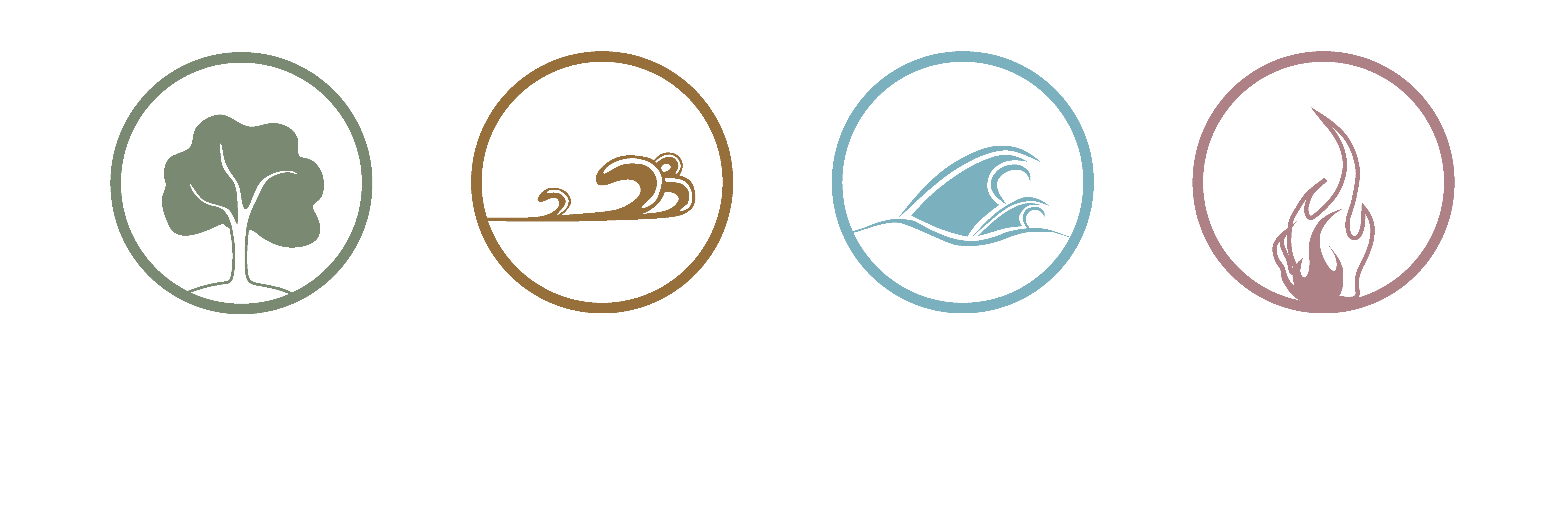
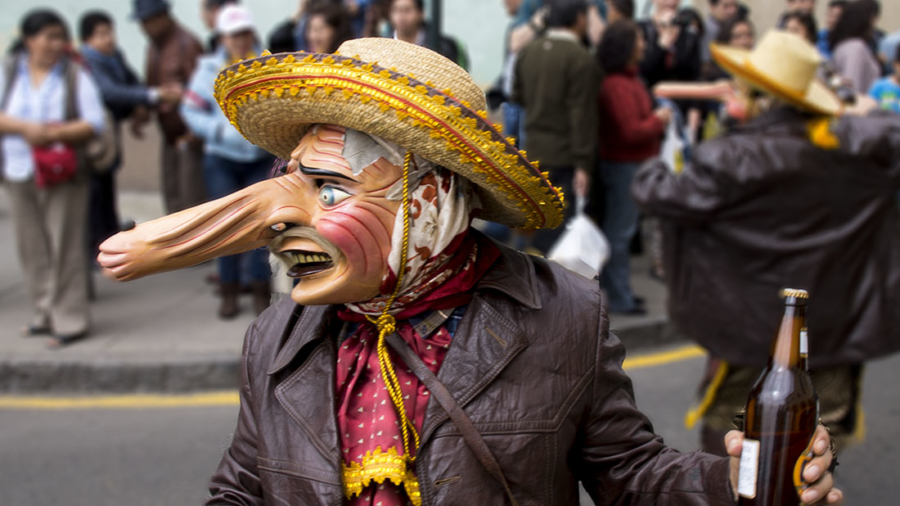
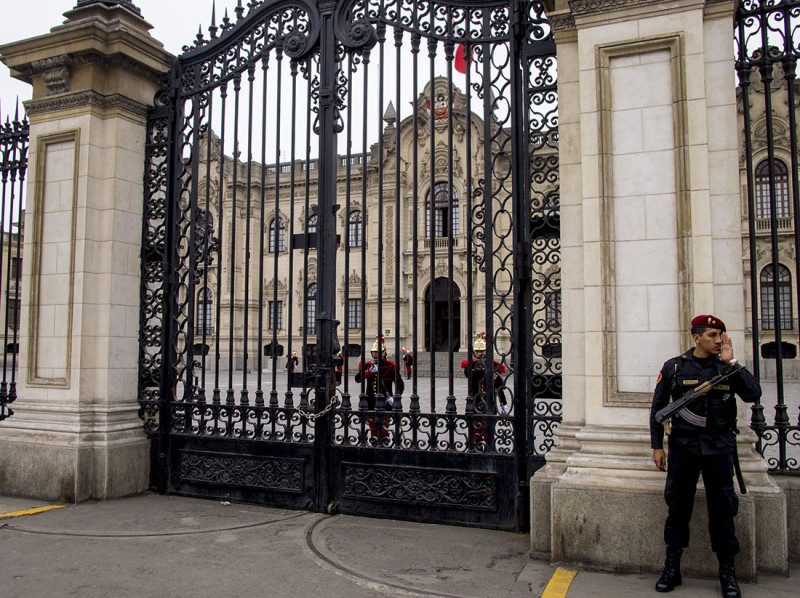
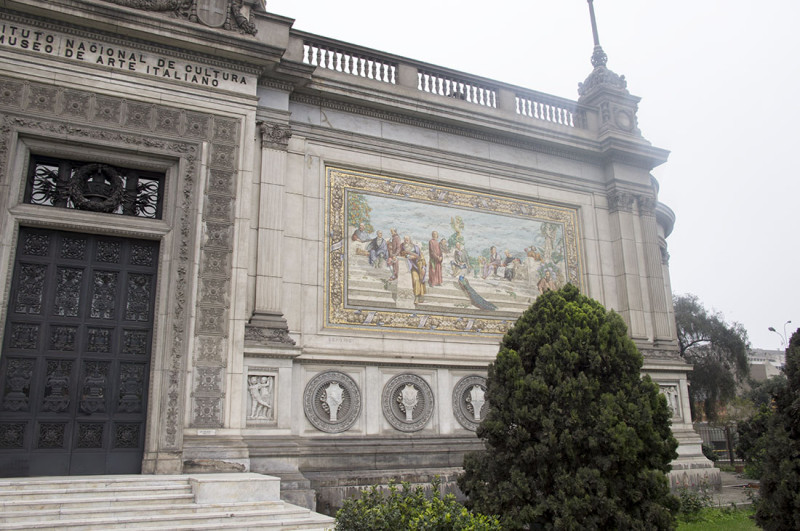
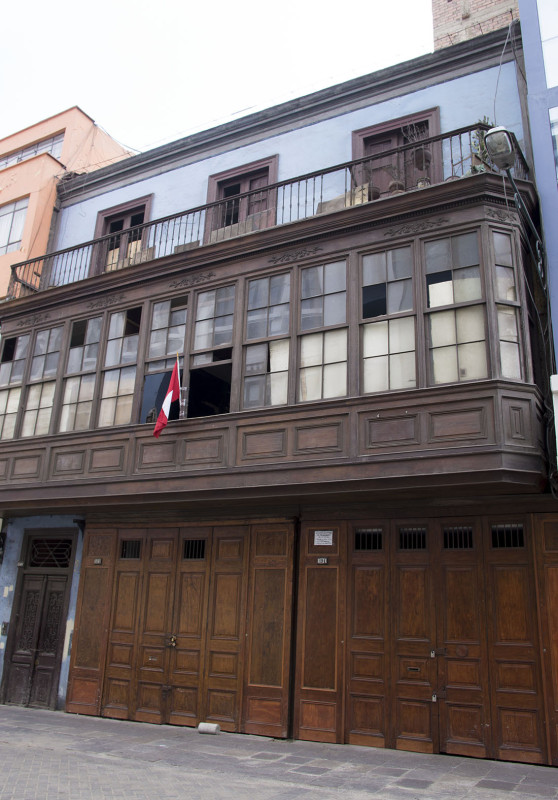
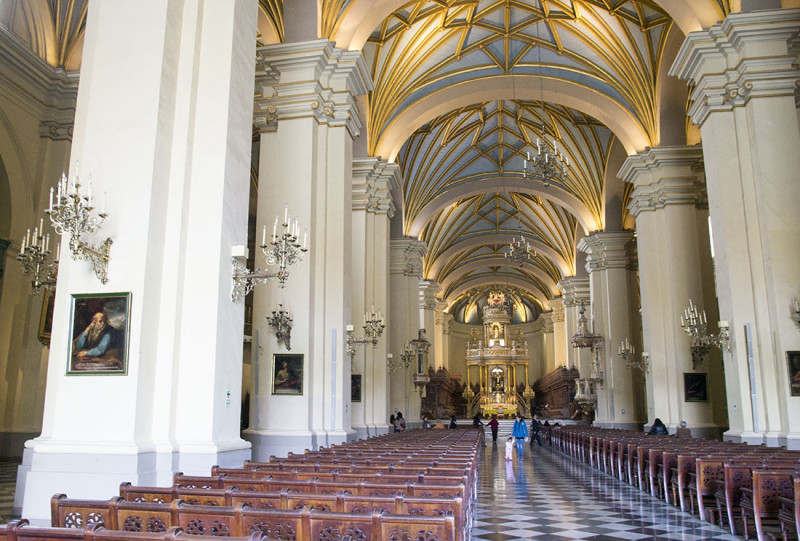
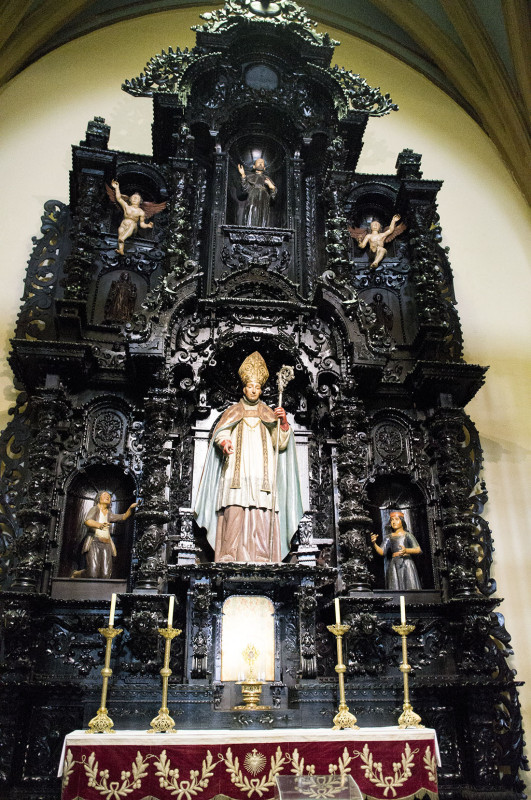
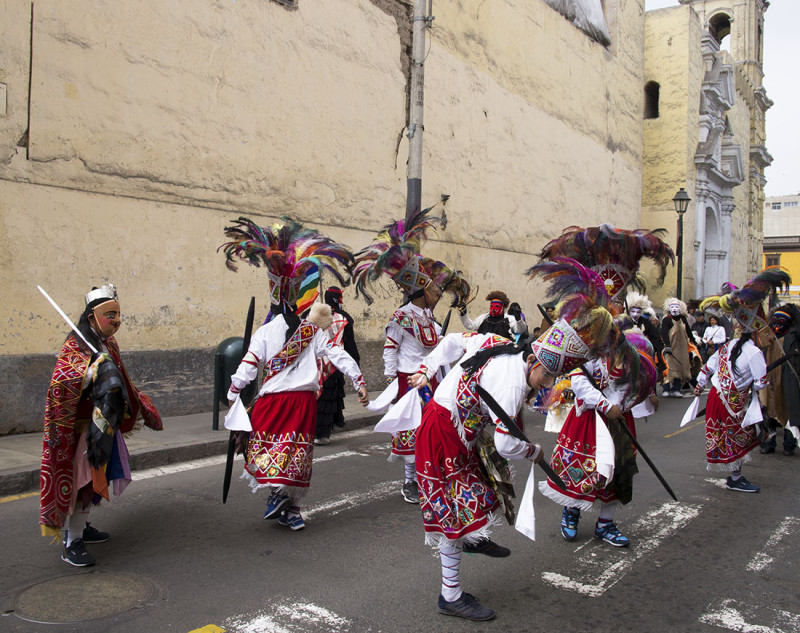
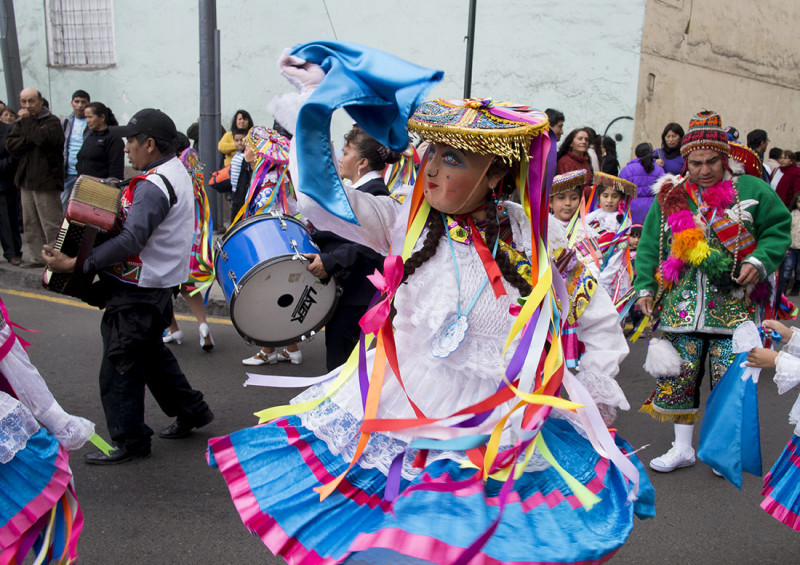
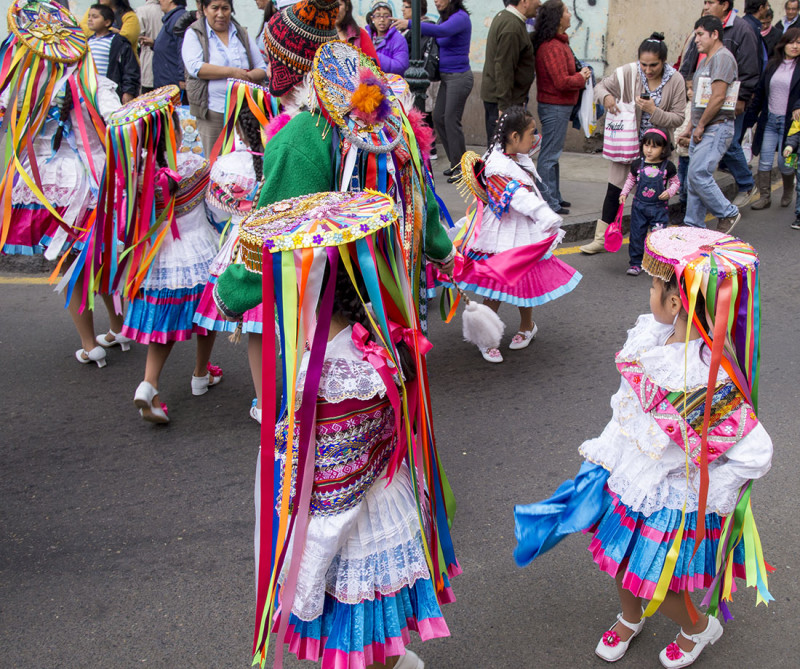
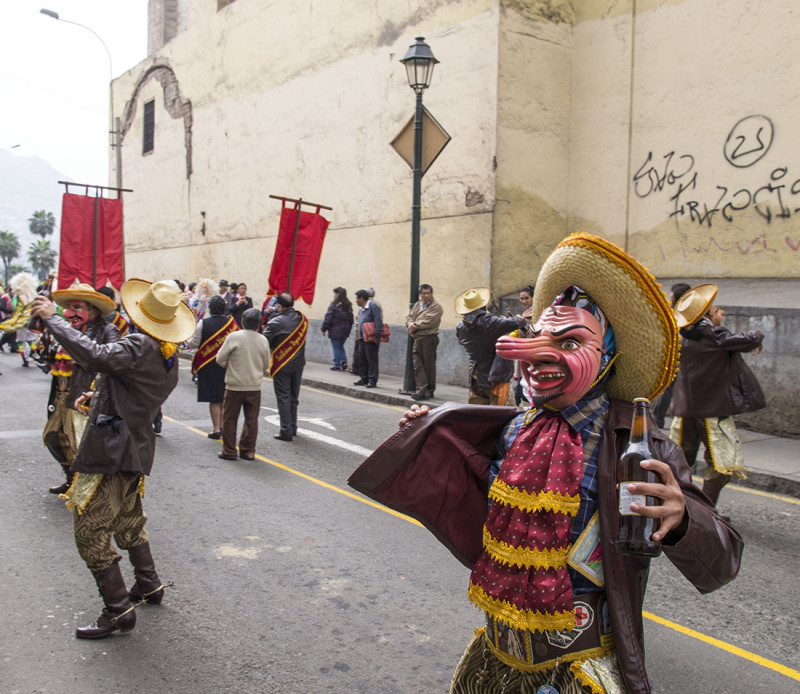
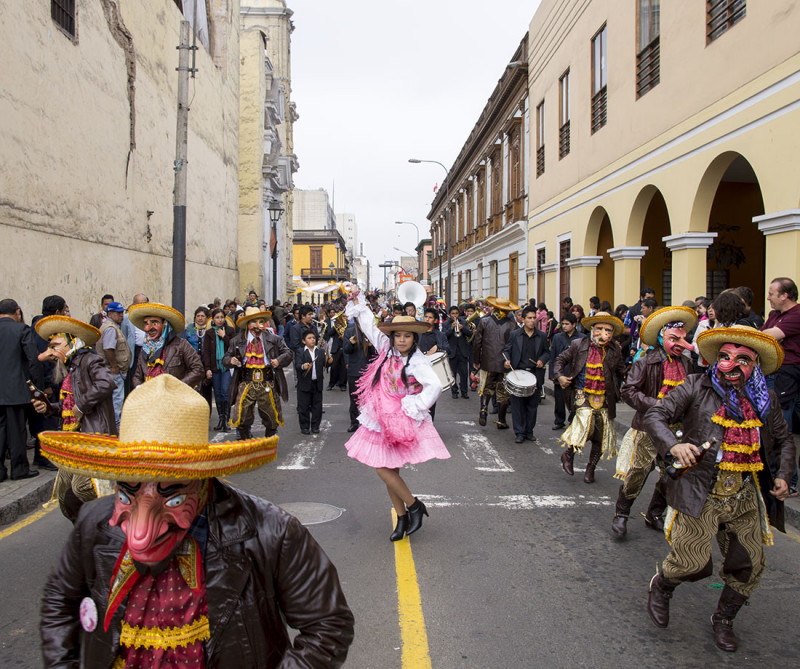
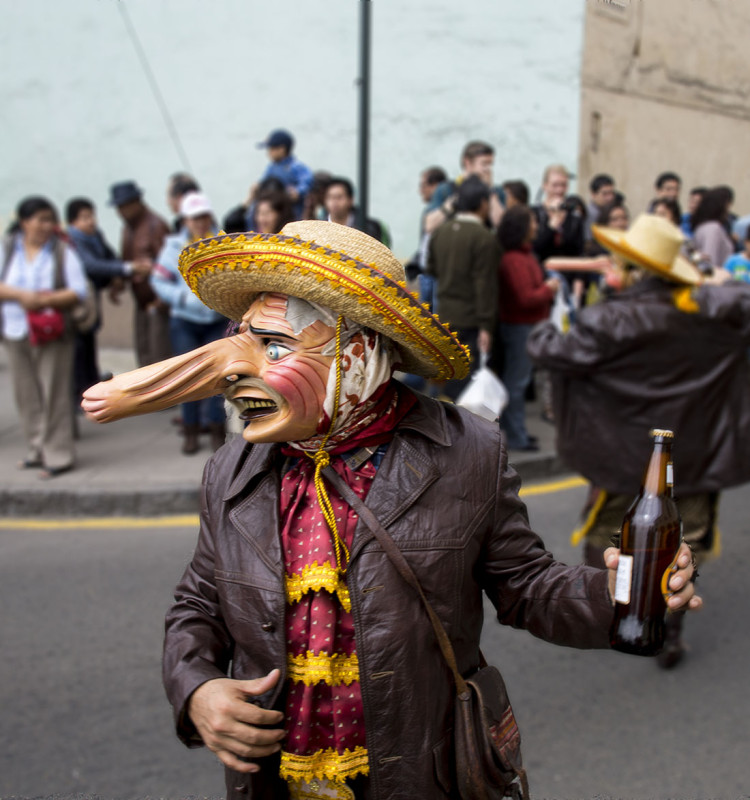
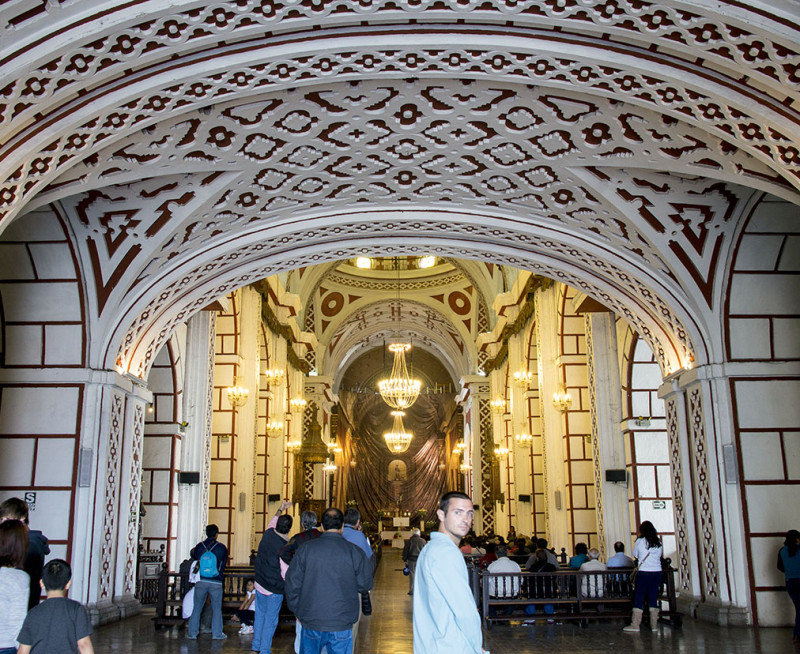
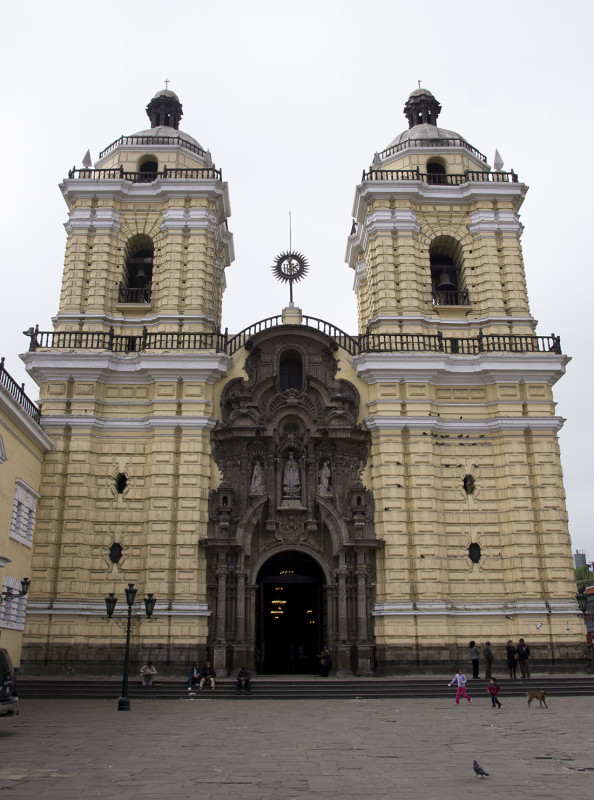
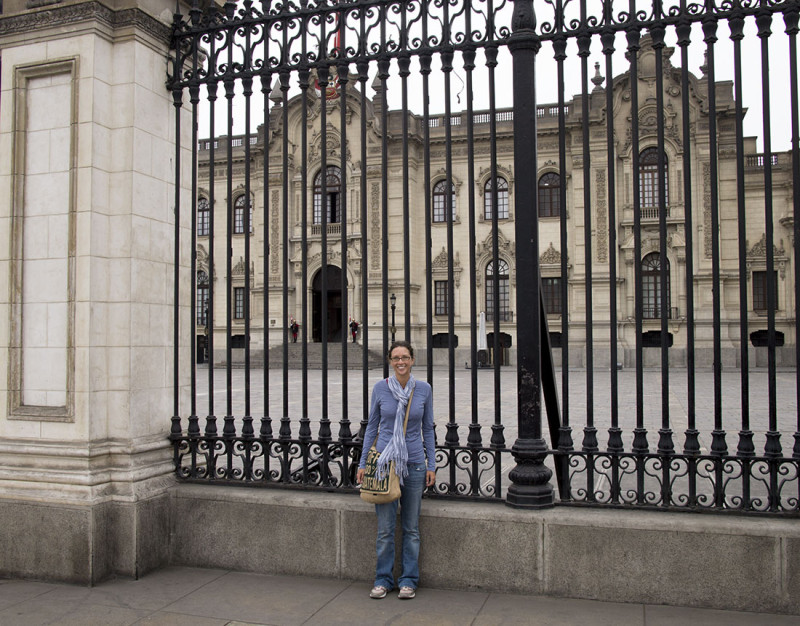
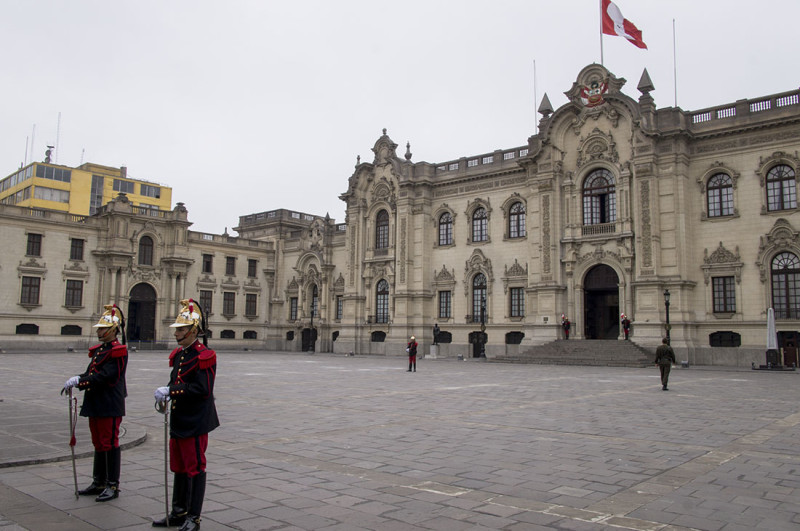
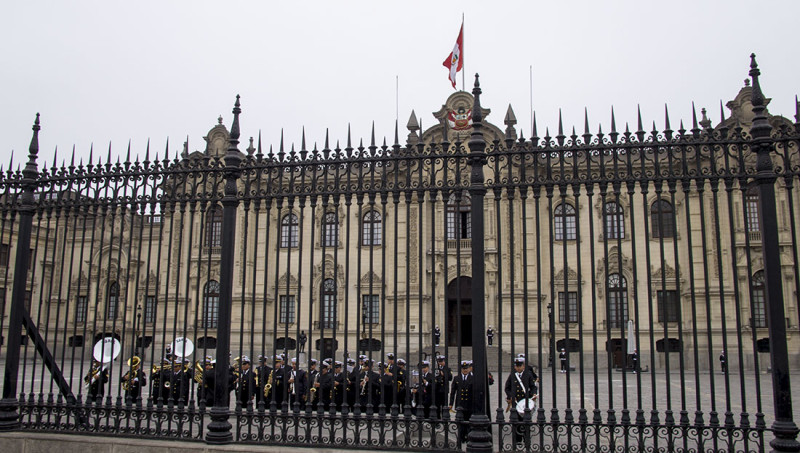
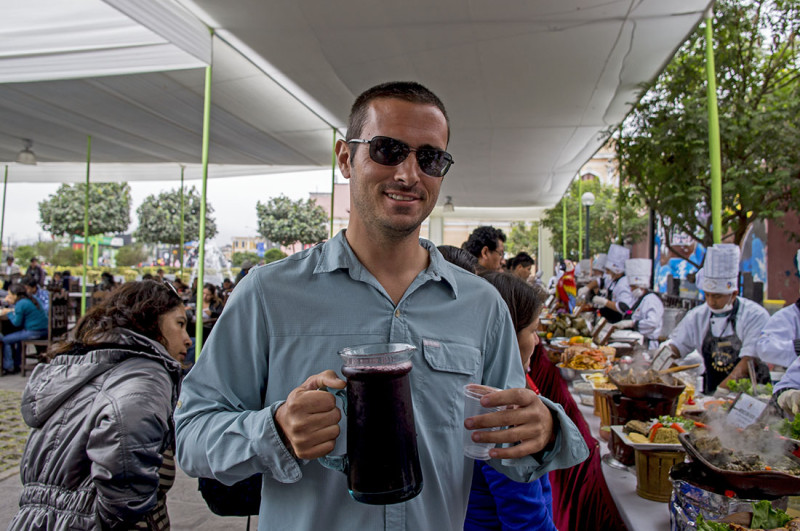
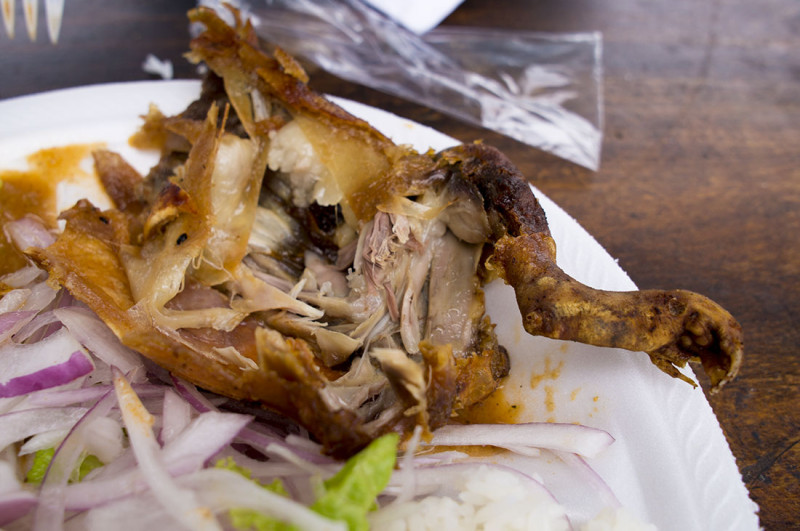
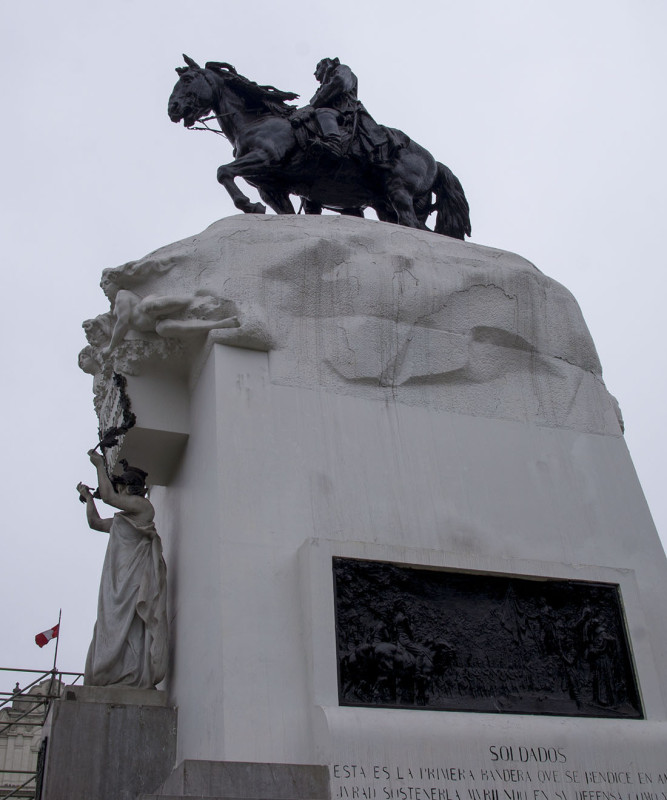
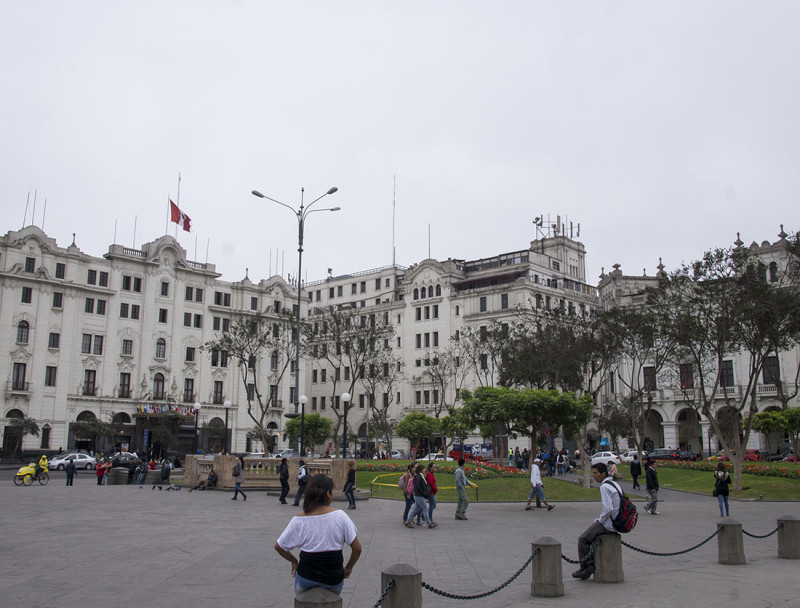
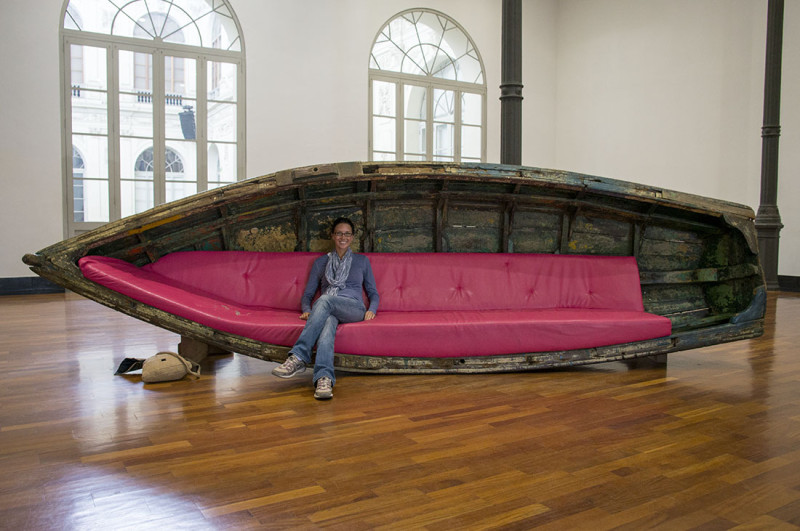
Super cool! I LOVE love love old places and those places you visited were gorgeous, just really unbelivable. Guinea pig! wow. Great photo, lol.
Thanks Dani! It was such an amazing place and filled with so much history. It wasn’t odd to walk into a building and find out it was 400-500 years old. Little bit different that what we’re used to here in the States. The guinea pig…yeah, that was an experience. 🙂
Lima sounds lovely
It was a beautiful and interesting place, but I think we would have liked it even better if we went in their summer season. Cold, overcast and dreary does not do well for us!
Wow! It sounds like your first day in Lima was quite an experience. I’m not sure what I liked best — the parade and Basilica photos and descriptions; the changing of the guard crazy old lady (oh, how I have wanted to clobber random people with my purse in large crowds before….); your guinea pig feast (complete with toe nails — Grandma is so proud of you for that!); or your whacky mind-wandering ideas while gazing at piles of human bones……No, none of the above. I like best that you arrived in Peru safe and sound, and are seeing beautiful and fascinating sights. I can’t wait to read your next post.